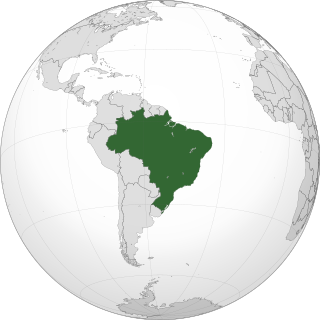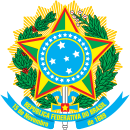
Back برتغالية برازيلية Arabic بورتوجالى برازيلى ARZ Braziliya portuqal dili Azerbaijani برزیل پورتوقال دیلی AZB Portuguès brasiler Catalan Португалихойн меттан бразилин вариант CE Portughese brasilianu Corsican Brazilská portugalština Czech Brasilianisches Portugiesisch German Brazila portugala Esperanto
| Brazilian Portuguese | |
|---|---|
| português do Brasil português brasileiro | |
| Native to | Brazil |
Native speakers | 203,080,756 (2022 – Official Census)[1] |
| Dialects | |
| Official status | |
Official language in | |
Recognised minority language in | |
| Regulated by | Academia Brasileira de Letras |
| Language codes | |
| ISO 639-3 | – |
| Glottolog | braz1246 |
| Linguasphere | 51-AAA-ah |
| IETF | pt-BR[2][3] |
 | |
| Part of a series on the |
| Culture of Brazil |
|---|
 |
| Society |
| Topics |
| Symbols |
Brazilian Portuguese (Portuguese: português brasileiro; [poʁtuˈɡejz bɾaziˈlejɾu]) is the set of varieties of the Portuguese language native to Brazil and the most influential form of Portuguese worldwide.[4][5] It is spoken by almost all of the 203 million inhabitants of Brazil and spoken widely across the Brazilian diaspora, today consisting of about two million Brazilians who have emigrated to other countries. With a population of over 203 million,[1] Brazil is by far the world's largest Portuguese-speaking nation and the only one in the Americas.
Brazilian Portuguese differs, particularly in phonology and prosody, from varieties spoken in Portugal and Portuguese-speaking African countries. In these latter countries, the language tends to have a closer connection to contemporary European Portuguese, partly because Portuguese colonial rule ended much more recently there than in Brazil, and partly due to the heavy indigenous and diasporic African influence on Brazilian Portuguese.[6] Despite this difference between the spoken varieties, Brazilian and European Portuguese barely differ in formal writing[7] and remain mutually intelligible. However, due to the two reasons mentioned above, the gap between the written, formal language and the spoken language is much wider in Brazilian Portuguese than in European Portuguese.[6]
In 1990, the Community of Portuguese Language Countries (CPLP), which included representatives from all countries with Portuguese as the official language, reached an agreement on the reform of the Portuguese orthography to unify the two standards then in use by Brazil on one side and the remaining Portuguese-speaking countries on the other. This spelling reform went into effect in Brazil on 1 January 2009. In Portugal, the reform was signed into law by the President on 21 July 2008 allowing for a six-year adaptation period, during which both orthographies co-existed. All of the CPLP countries have signed the reform. In Brazil, this reform has been in force since January 2016. Portugal and other Portuguese-speaking countries have since begun using the new orthography.
Regional varieties of Brazilian Portuguese, while remaining mutually intelligible, may diverge from each other in matters such as vowel pronunciation and speech intonation.[8]
- ^ a b Umberlândia Cabral (2023-06-28). "Census 2022: Between 2010 and 2022, Brazilian population grows 6.5%, reaches 203.1 million". Agência de Notícias IBGE (IBGE News). Retrieved 19 July 2023.
- ^ "Portuguese". IANA language subtag registry. 16 October 2005. Retrieved 11 January 2019.
- ^ "Brazil". IANA language subtag registry. 16 October 2005. Retrieved 11 January 2019.
- ^ The World's 10 most influential languages, George Werber, 1997, Language Today, retrieved on scribd.com
- ^ Bernard Comrie, Encarta Encyclopedia (1998); George Weber "Top Languages: The World's 10 Most Influential Languages" in Language Today (Vol. 2, Dec 1997) "Archived copy". Archived from the original on 2011-09-27. Retrieved 2011-09-28.
- ^ a b Freyre, Gilberto (2019-03-15). Casa-grande & senzala (in Brazilian Portuguese). Global Editora. ISBN 978-85-260-2461-8.
- ^ "Brazil – Language". countrystudies.us.
- ^ "Brazilian dialectal zones". www.linguaportuguesa.ufrn.br. The Portuguese Language